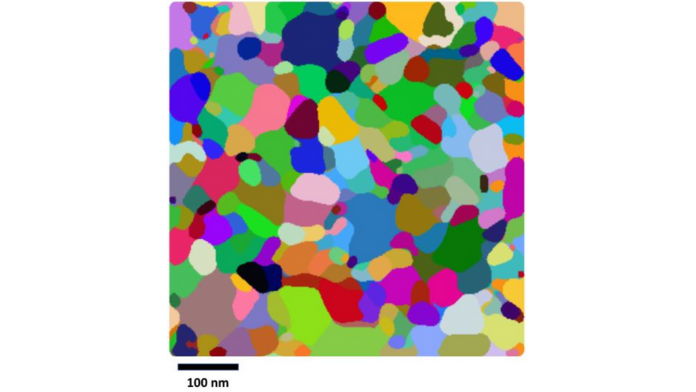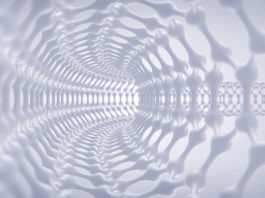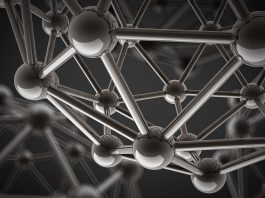New research is helping scientists better understand how microstructures change and undergo grain growth at high temperatures.
A team of materials scientists and applied mathematicians have developed a model that can help scientists understand how microstructures go through grain growth. The model more accurately describes microstructures by integrating data that can be identified from highly magnified images taken during experiments.
The work, ‘Point process microstructural model of metallic thin films with implications for coarsening,’ is published in Nature: Computational Materials.
The importance of studying grain growth
The orientations of the infinitesimally small separations between individual grains of a polycrystalline material have large effects. For example, in a material such as aluminium, these collections of grains – called microstructures – determine properties like hardness.
“Our model is novel because it is given in terms of features that can be identified from experimental micrographs, or photos that reveal the details of microstructures at a length scale of nanometres to microns,” said Jeffrey M Rickman, Class of ’61 Professor of Materials Science & Engineering at Lehigh University.
“Because our model can be related to these experimental features, it is a more faithful representation of the actual grain growth process.”
The new model is the first to integrate data on the interactions of the triple junctions
To develop their model, the researchers mapped crystal orientation on thin aluminium films with columnar grains. They then used a stochastic, marked point process to represent triple junctions – points where three grains and grain boundaries meet in the structure.
The model is the first to integrate data on the interactions and disorientations of these triple junctions to predict grain growth.
The research will be used to help develop new materials
Predicting grain growth is a key area of study in materials science, and is vital to the creation of new materials. Many models of grain growth have therefore been developed as a result. However, the project’s direct link between the experimental micrographs and the mathematical model is very unique.
By linking the model directly to features that can be tracked during experiments, computational materials scientists who model the kinetics of grain growth will be benefitted.
“Ultimately, this research provides a way to better understand how grain growth works and how it can be used to inform the development of new materials,” Rickman said.
The research has been funded by the National Science Foundation under the Designing Materials to Revolutionise and Engineer Our Future (DMREF) programme.





